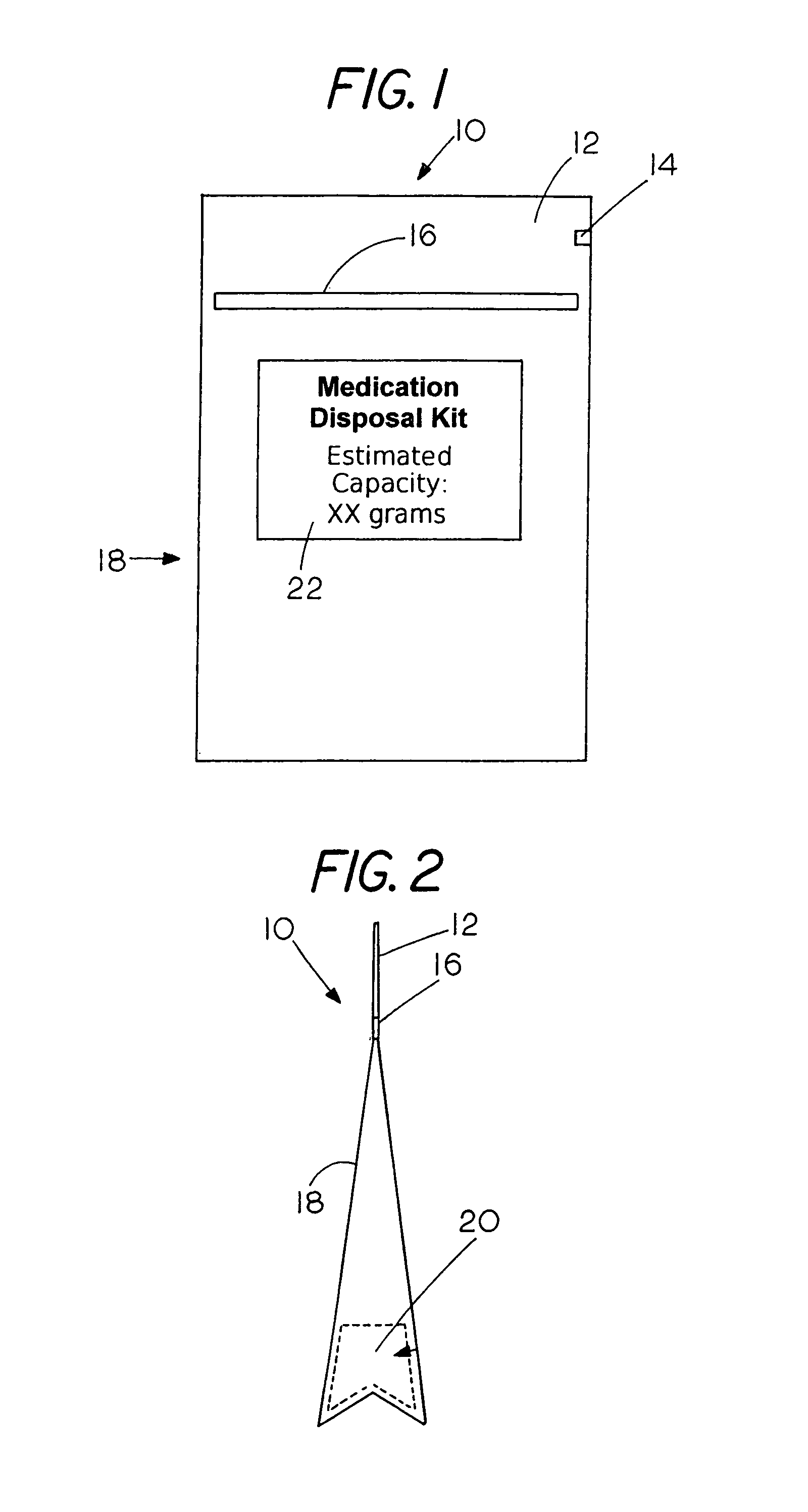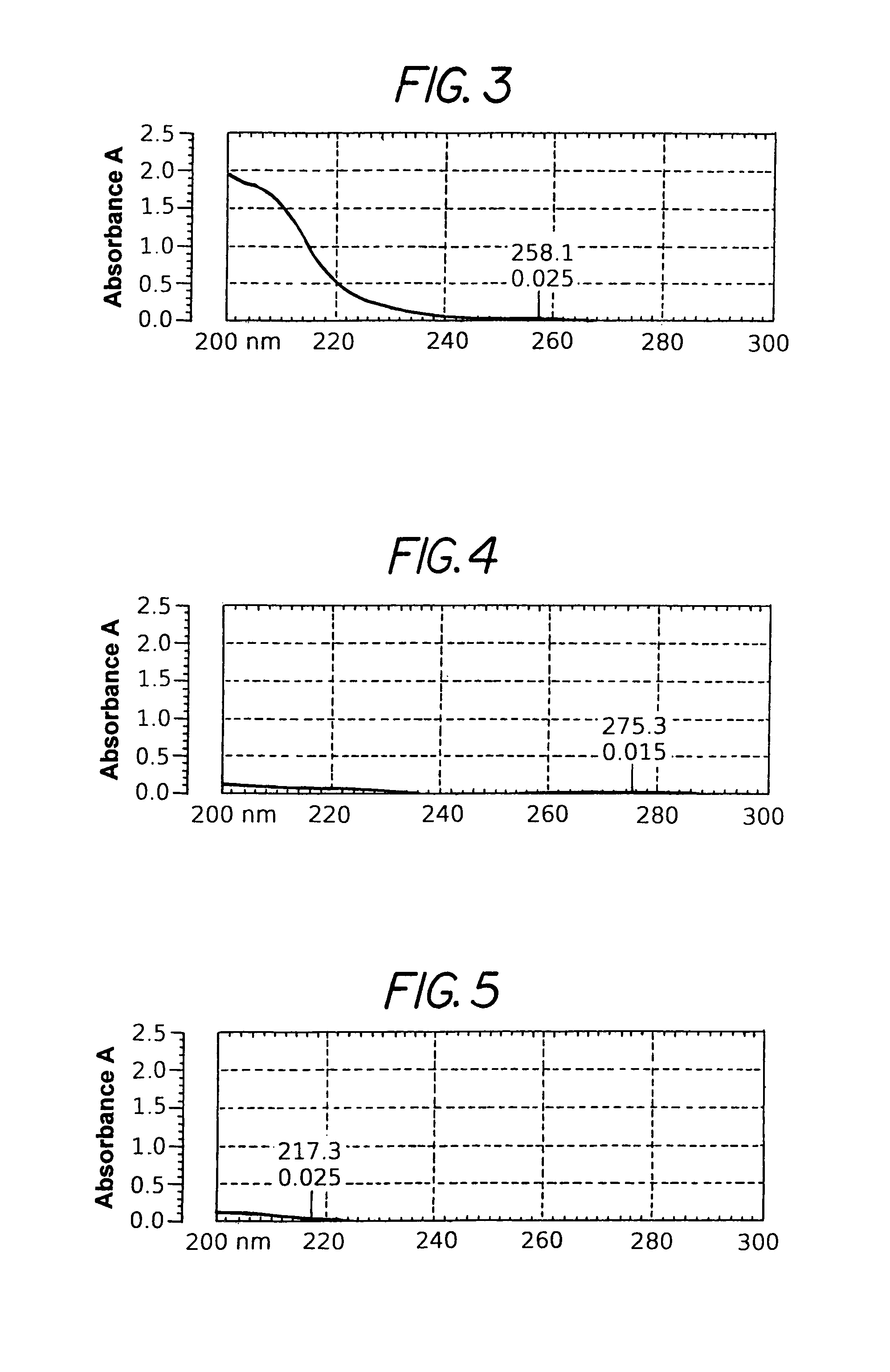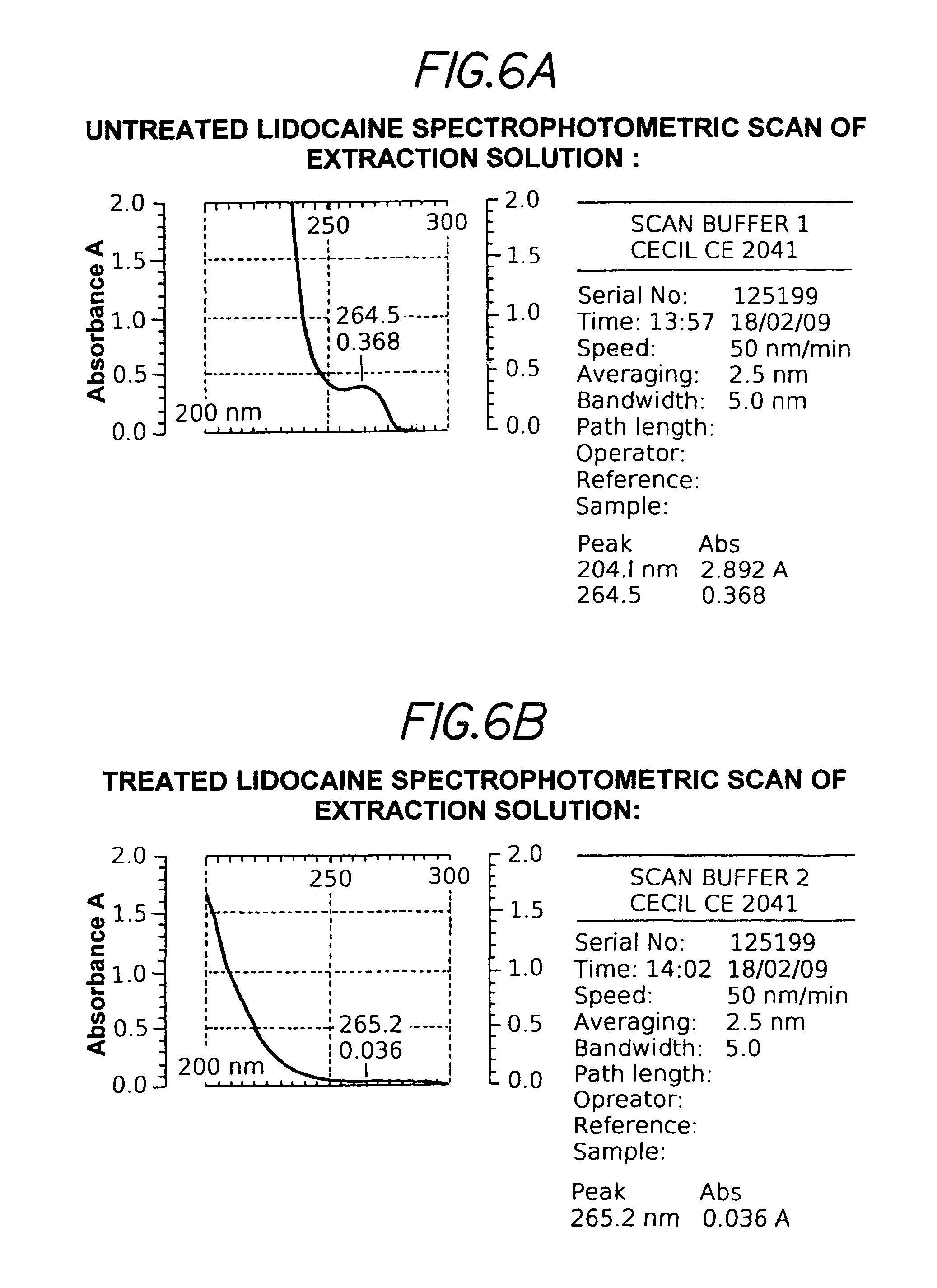Medication disposal system
a technology of disposal system and medication, applied in the direction of liquid chemical process, liquid gas reaction process of thin film type, gas-gas reaction process, etc., can solve the problems of preventing future separation by normally available means, affecting the effect of drug safety, and affecting the safety of patients, so as to and reduce the potential for abuse or environmental contamination
- Summary
- Abstract
- Description
- Claims
- Application Information
AI Technical Summary
Benefits of technology
Problems solved by technology
Method used
Image
Examples
example i
[0045]As a test of a model compound, a medication kit in accordance with this invention was used to ‘deactivate’ Lidocaine. Lidocaine is an anesthetic agent and a common ingredient in liquid, gels, creams and patch forms. The procedure was as follows:[0046]1. To a mixture of 20 grams Activated Carbon and 2 grams of HPMC, 100 ml of water was added which resulted in a suspended gel slurry of activated carbon. 2.5 grams of Lidocaine HCl was added and the solution was mixed.[0047]2. A control (Untreated) solution was prepared by mixing the same amount of Lidocaine HCl with water.[0048]3. Both solutions were allowed 7 days to equilibrate.[0049]4. Each solution was filtered with a nylon filter membrane and diluted 1:100 by weight with distilled water, with the dilution representing wash-out to the environment.[0050]5. Both solutions were scanned by a UV / Vis spectrophotometer between 200 and 300 nm.
[0051]The untreated solution displayed a peak absorbance of 0.368 at 265 nm, corresponding t...
example ii
[0052]As a test of another model compound, the medication kit of this invention was used to ‘deactivate’ Diclofenac. Diclofenac is an anti-inflammatory agent and a common ingredient in oral, gel, and patch forms. The procedure was as follows:[0053]1. To a mixture of 20 grams Activated Carbon (1500) and 2 grams of HPMC, 100 ml of water was added which resulted in a suspended gel slurry of Activated Carbon. 2.5 grams of Diclofenac potassium was added and the solution was mixed.[0054]2. A (Untreated) control solution was prepared by mixing the same amount of Diclofenac potassium with water.[0055]3. Both solutions were allowed 7 days to equilibrate.[0056]4. Each solution was filtered with a nylon filter membrane and diluted 1:1000 by weight with distilled water, with the dilution representing wash-out to the environment.[0057]5. Both solutions were scanned by a UV / Vis spectrophotometer between 200 and 300 nm.
The untreated solution displayed a peak absorbance of 0.757 at 277 nm, correspo...
PUM
| Property | Measurement | Unit |
|---|---|---|
| particle size | aaaaa | aaaaa |
| weight | aaaaa | aaaaa |
| open volume | aaaaa | aaaaa |
Abstract
Description
Claims
Application Information
 Login to View More
Login to View More - R&D
- Intellectual Property
- Life Sciences
- Materials
- Tech Scout
- Unparalleled Data Quality
- Higher Quality Content
- 60% Fewer Hallucinations
Browse by: Latest US Patents, China's latest patents, Technical Efficacy Thesaurus, Application Domain, Technology Topic, Popular Technical Reports.
© 2025 PatSnap. All rights reserved.Legal|Privacy policy|Modern Slavery Act Transparency Statement|Sitemap|About US| Contact US: help@patsnap.com



